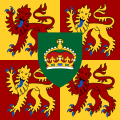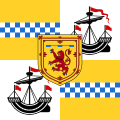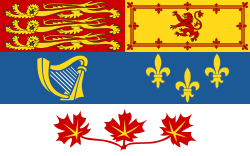| ||
|---|---|---|
Personal Life as Prince of Wales Reign Charities and campaigns | ||
| | ||
King Charles III has and has had a variety of flags to represent him as a prince, duke, and, eventually, head of state of three of his 15 realms; in the latter case, the heraldic flags are the nation's coat of arms in banner form. The flags are usually used on any building, ship, car, or aircraft where Charles is present.










